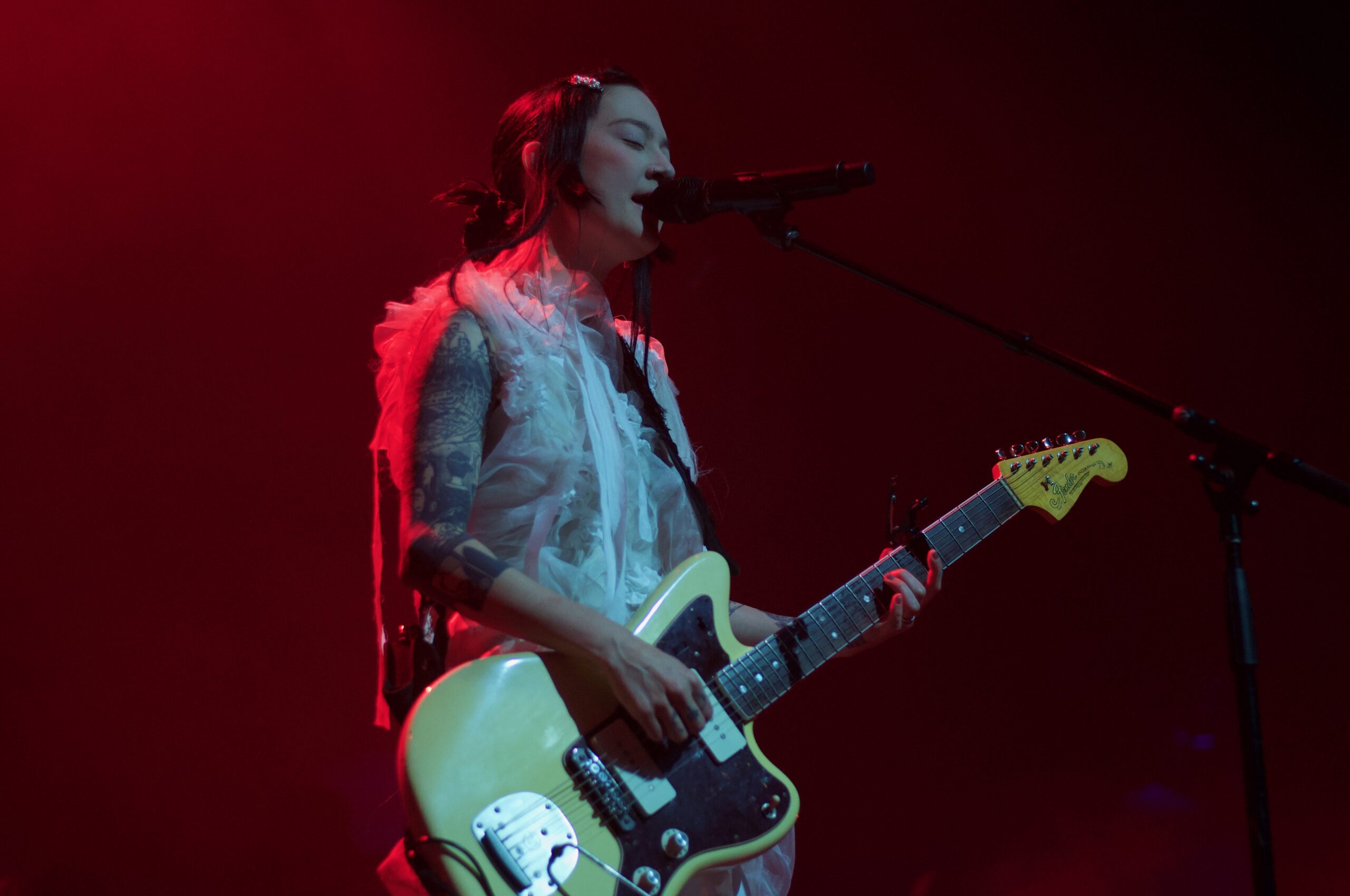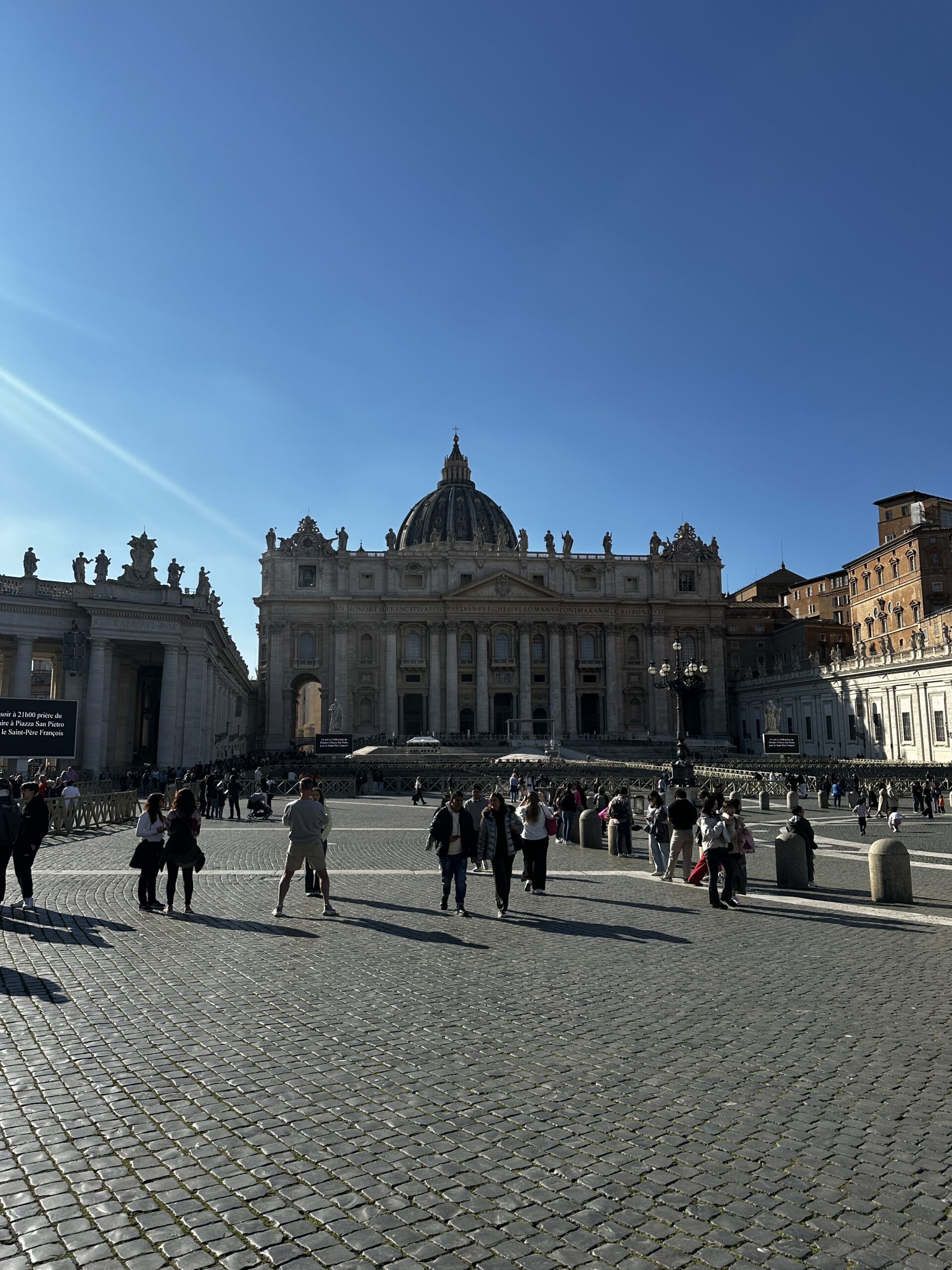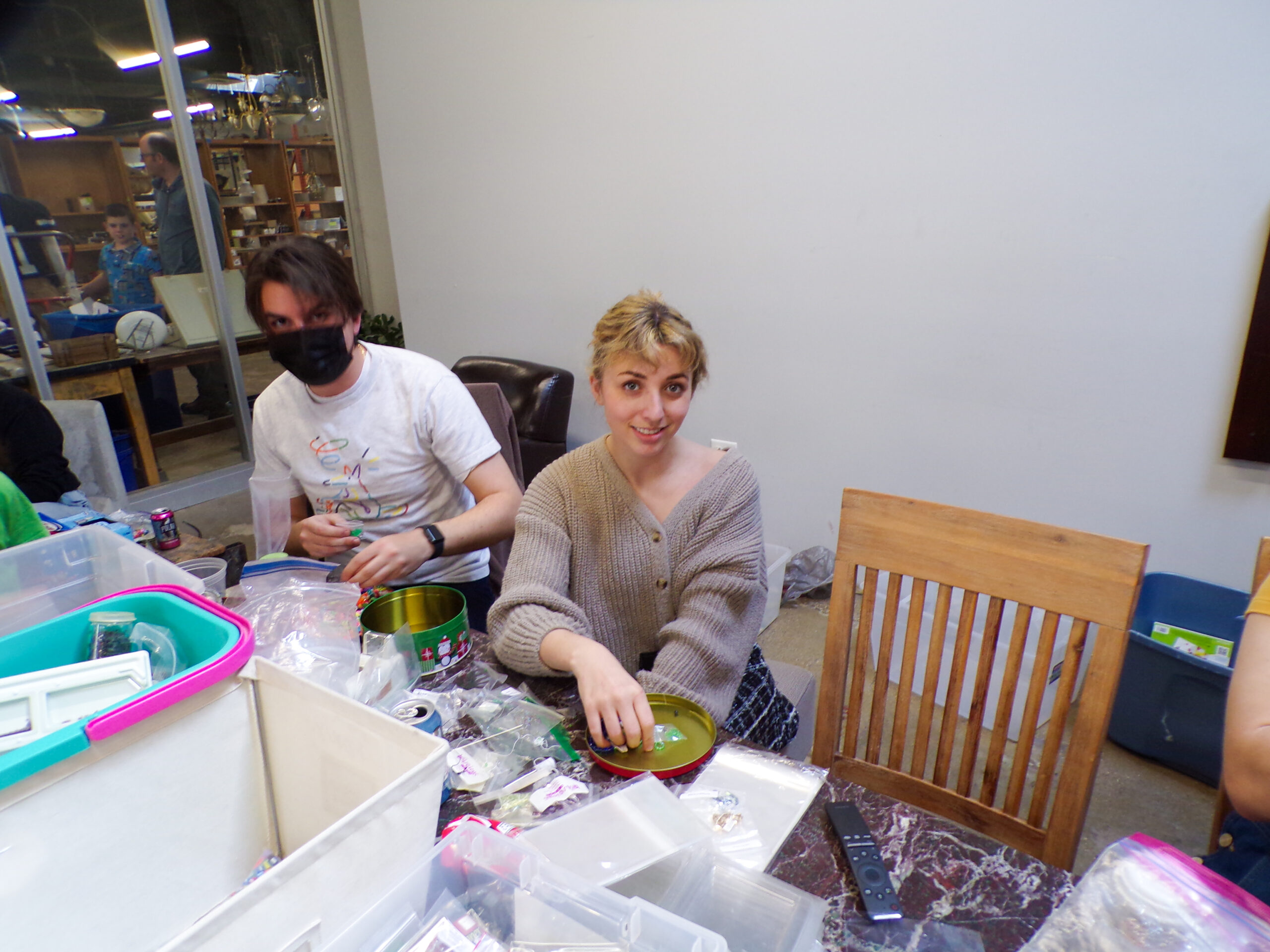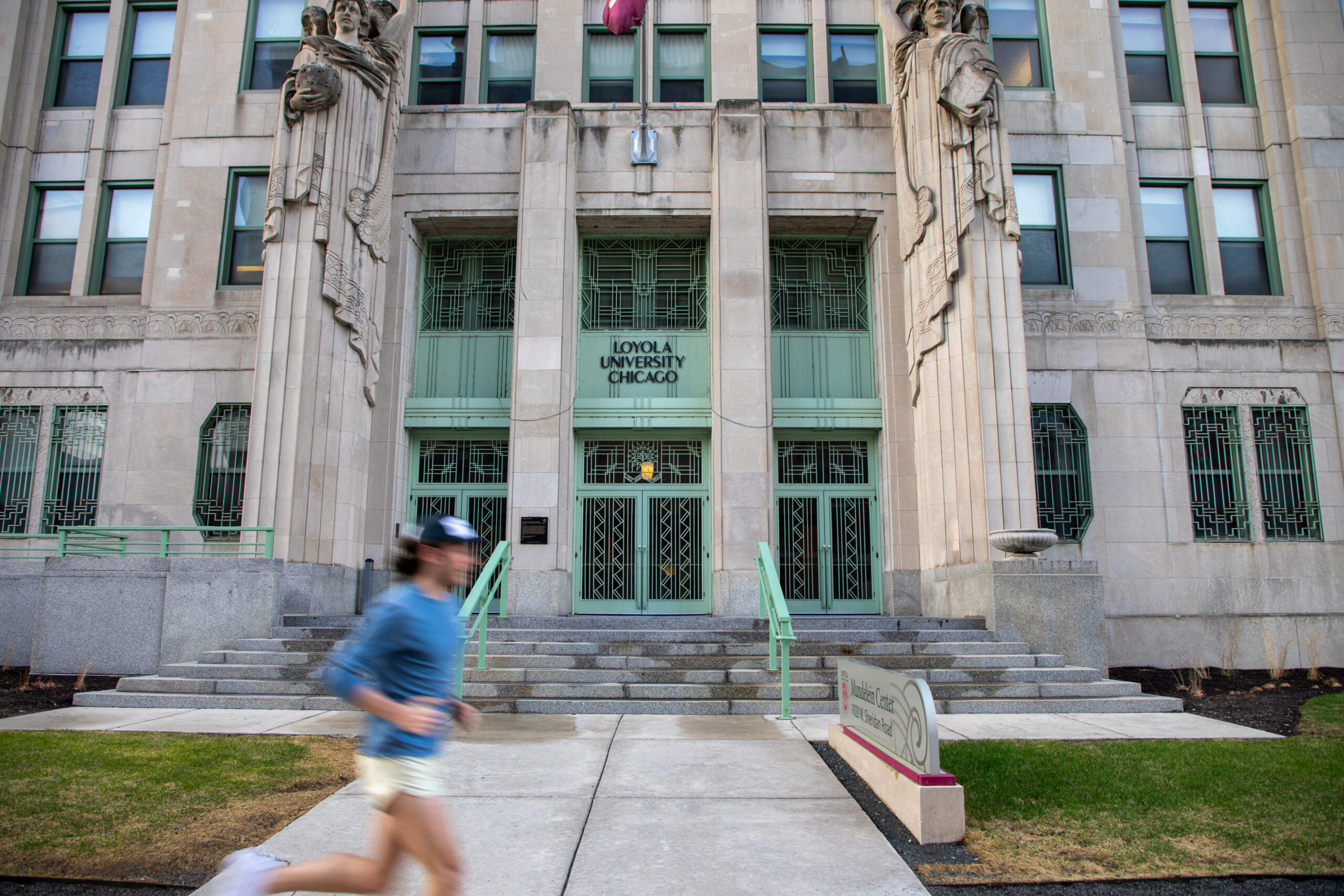At the Museum of Contemporary Art Chicago, its new exhibit takes the viewer on an extensive, visually-compelling journey of Faith Ringgold, an artist and Civil Rights activist.
The first room in the Museum of Contemporary Art Chicago’s new exhibit “Faith Ringgold: American People” thrusts the viewer into a world full of eyes.
Ringgold, who is now 93, was an avid artist and activist during the Civil Rights Movement. “Faith Ringgold: American People” displays her diverse canon of works and draws from her experiences as a Black woman in America over the course of 60 years.
The subjects of each painting — dramatically shaded human figures — pile on top of one another as if slowly encroaching upon the room’s center. Surrounded by these ominous figures, the viewer seemingly has no choice but to acknowledge the emotion behind each painted person’s penetrating eyes.
For Jamillah James, the Manilow senior curator at the museum, these early works situate the museumgoer in Ringgold’s induction to the artistic sphere. A mix of narratives and self-portraits, these works discuss Ringgold’s “experience of alienation,” according to James. As the exhibit’s designer, James said these early works establish Ringgold’s legacy as both artist and activist.
“Understanding that Faith had had very limited visibility in Chicago was alluring to me as someone who is very committed in, kind of, reparative or cooperative art history and making sure that artists are not just reflected in the cultural history of a city but also in the life of an institution,” James said.
The expansive gallery, which spans the entire fourth floor, takes museumgoers through a loose chronology of Ringgold’s artistic life. Debuting at the New Museum in New York City last year, James said she worked closely with the New Museum’s curators and Ringgold’s team to design the exhibit.
The first room featuring Ringgold’s early works is succeeded by another room full of works from her original “The American People Series” created in the 1960s. This series is Ringgold’s first critique of “what Americanness means,” according to James.
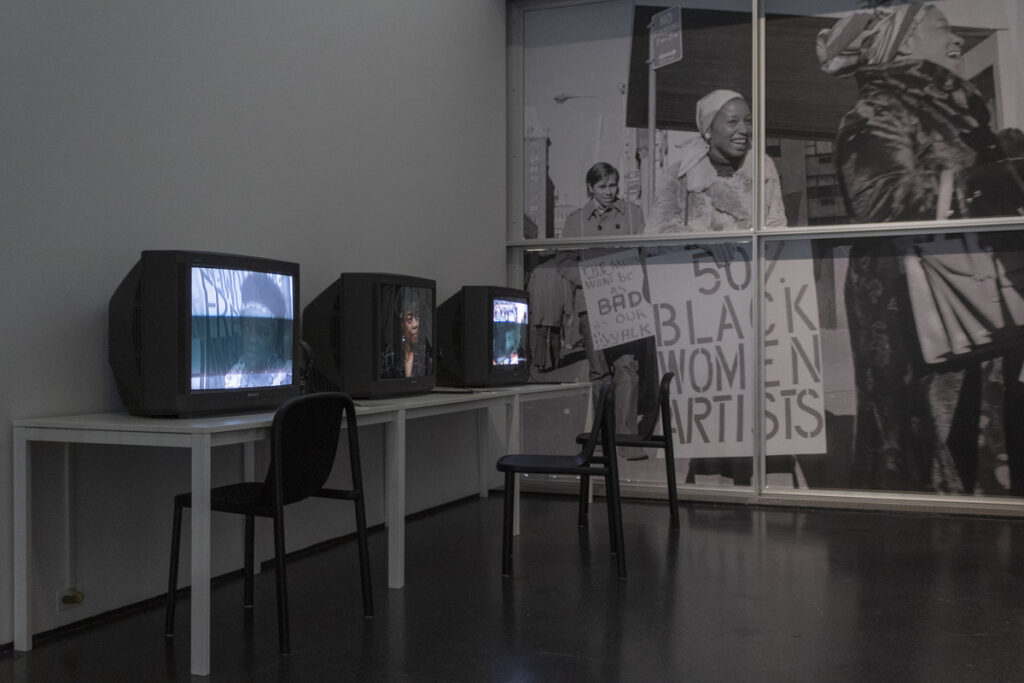
James identified the penultimate piece in “The American People Series” as “American People #19: US Postage Stamp Commemorating the Advent of Black Power.” The work depicts an exhaustive design for a postage stamp in which the eyes of a variety of people stare out at the viewer.
The words “BLACK POWER” are spelled out diagonally, while the negative space between the painted eyes spells out “WHITE POWER.” James said the power of this piece makes it one of her favorites in the gallery.
“This work connects on the ways in which white supremacy is very insidious and is often hidden to people that might not be aware of it whereas it reveals itself to people that it impacts and oppresses the most — amazing piece,” James said.
The next room transitions from Ringgold’s exploration of American iconography to her study of African art and transition to artistic mediums outside of painting.
While the first two rooms in the exhibit pointedly distinguish the viewer from the narrative portraits, this room made an effort to actively incorporate the viewer into Ringgold’s artistic world, as the dynamic curatorial choices force the museumgoer to walk between different works. Ringgold’s abstract statues of women stand amidst wall-to-wall paintings and textiles.
The following room continues to expand Ringgold’s artistic canon, displaying works of performance art and paintings from her period of abstraction.
The incorporation of Ringgold’s abstract works is new to this exhibition, as James said the artist’s abstract pieces are “lesser seen.” However, the inclusion of this artistic era demonstrates the multifaceted nature of Ringgold’s artistic development.
The works evoke a sense of Ringgold’s personal anger and grief over the death of her mother, according to James, a refreshing divergence from her more metaphorically dense works.
As the museumgoer walks out of this room, they find themselves in a transitional space full of archival multimedia materials. Including over six hours of video footage of Ringgold in addition to many of her written works, this liminal space reflects Ringgold’s identity as an artist in constant transition.
Upon leaving the archival space, the viewer then enters into rooms filled with Ringgold’s renowned quilts. Although somewhat arranged in thematic categories, the quilts each occupy their own narrative space.
This exhibition choice allows the viewer to identify the prolificity of Ringgold’s quilts while also appreciating the nuance and detail of each one.
Before breaking off from the quilts and exploring the final two rooms detailing Ringgold’s artistic chronology, exhibit designer James allows the museumgoer an opportunity to break off and see the impact of Ringgold’s work in contemporary art.
Deeming this offshoot the “show within the show,” James said she implemented works from the Museum of Contemporary Art’s collection into “Faith Ringgold: American People” to demonstrate Ringgold’s impact on Black representation, the legacy of the Civil Rights Movement and the pushing of artistic boundaries.
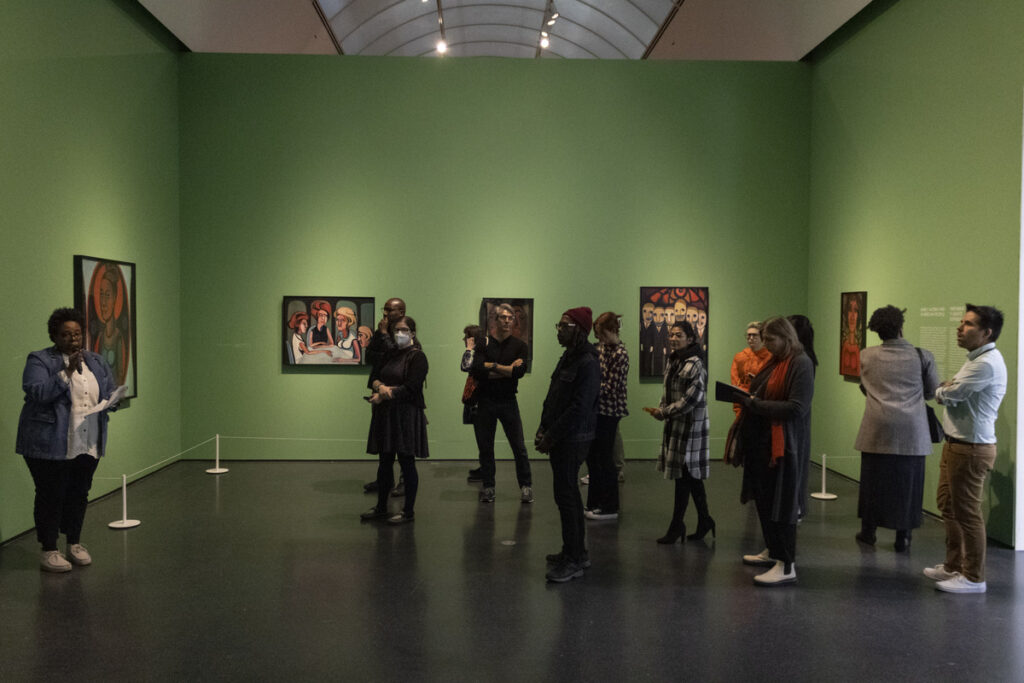
These micro-galleries in combination with the final two rooms featuring works from the artist’s “French Collection” and “American Collection” bring the relevance of Ringgold’s artistic and activist legacy into the present-day.
“With having these works in conversation with each other I wanted to bring things to the present in that these are issues that persist,” James said.
In the final room of the exhibit, Ringgold’s “American Collection” returns to the exhibit’s opening themes examined in her early works and “The American People Series.”
Following the narrative of a fictional Black girl as she examines her relationship with American culture, the connectivity between these two collections demonstrates the persistence of the injustices Ringgold’s work explores.
James echoed the continued relevance of Ringgold’s work in relation to modern issues of community violence, artistic representation and ongoing liberation struggles for equality.
“These are all issues that Faith has been discerning for the better part of 60 years that are still, unfortunately, part of our every day,” James said. “So to be able to host this show at the [Museum of Contemporary Art] at this time is a total privilege, and I cannot wait for people to really deeply engage with this show.”
“Faith Ringgold: American People” is on display in the museum’s Griffin Galleries from Nov. 18 to Feb. 25. Tickets are available on their website.
Featured photo by Ryan Pittman / The Phoenix
-

Hailey Gates is a third-year student majoring in English and minoring in journalism and art history. In addition to working as Opinion Editor of The Phoenix, she is a Writing Fellow at the Writing Center and a Provost Fellow undergraduate researcher. She loves to write feature stories about local art and artists and Opinion pieces on everything from national politics to Reese’s Peanut Butter Pumpkins.
View all posts




